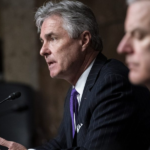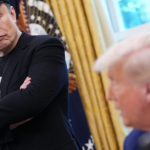I remember the first time I was asked to evaluate a major technological shift. I was a college student studying accounting in the mid-1990s, and one of my projects was to decide if the Internet could become a viable platform for commerce. My group and I researched, ran the numbers, made the presentations and gave the answer that felt obvious: No, the Internet would not work.
At the time, we couldn’t imagine using a credit card online. Or buying shoes on a computer. Like many people then, we underestimated what would become the most important technological advancement of our lives. How wrong we were.
In the long run, though, my college experience would give me a deeper understanding of the forces of innovation. When I first encountered crypto in 2017, I saw parallels to the internet, including what I missed the first time. I saw a similar structure, incentives and also a sense of inevitability. That insight led me to found Pure Crypto, a digital asset investment firm which was the best-performing hedge fund-of-funds globally between 2018 and 2025.
What that tells me is simple: When a transformative technology arrives, the window of opportunity is longer and bigger than it looks.
One of the biggest shifts in my approach — and maybe the reason I didn’t misjudge crypto like I did the Internet — was learning to dig deeper. When I initially dismissed the Internet as a viable commercial platform, I didn’t understand the infrastructure. I looked at the surface — what seemed possible then — instead of understanding what might come next. With crypto, I’ve made an effort to be more tenaciously curious. I ask different questions now:
What’s the architecture? What does this protocol actually enable? Is it solving a real-world problem or is it just noise? I’m not a computer scientist or developer, and I don’t pretend to be. But I’ve learned that understanding the fundamentals changes the way you see the space.
When I evaluate crypto, I try to treat it like infrastructure, not speculation. I want to know how a system creates trust without intermediaries, what incentives are built into the design and whether it unlocks new behaviors or markets that weren’t possible before.
One thing crypto taught me quickly: you can’t do this alone. It’s such a fast-moving, interdisciplinary space that no one can fully keep up on their own. Early on, I realized my best shot at understanding the landscape wasn’t about being the smartest person in the room. It was about being in rooms where I could learn.
That’s become a theme throughout my journey. Some of the most important insights I’ve gained in this space haven’t come from a spreadsheet or whitepaper, but from conversations. From putting myself around people who were thinking deeply about this technology in ways I wasn’t yet.
Finally, if there’s one thing I’ve come to believe about innovation, it’s that the most important shifts don’t happen overnight.
Over the years, I’ve trained myself to stay focused on the longer-term horizon. To tune out the noise and look for the quieter signals: where real adoption is happening, where infrastructure is quietly being built and where people are solving hard problems, not chasing trends. Patience isn’t flashy. But it might be the most underappreciated edge in a space like this.
I missed the Internet wave. I’ve been doing everything I can not to miss this one.
The opinions expressed in Fortune.com commentary pieces are solely the views of their authors and do not necessarily reflect the opinions and beliefs of Fortune.









